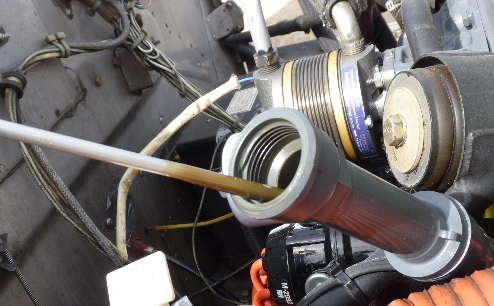Thunderstorms occur when there is a lifting action upon the
air, and if there is enough instability and moisture, the clouds increase in
height while the strong updrafts prevent the moisture from falling (PHAK, n.d.).
The moisture in the clouds then become too heavy and fall as either rain or
hail, thus causing a downward motion of the air. This cycle of warm, rising air
meeting the cool, descending air is what essentially causes thunderstorms to
form, but there must also be sufficient water vapor in the air, an unstable
lapse rate, and the initial lifting action (PHAK, n.d.).
Thunderstorms can pose a great risk to pilots due to the
many hazards that form from them. The lightning can puncture aircraft and
disrupt communications, the heavy rain can make it extremely difficult for the
pilot to see, and the hail can severely damage the aircraft. What also makes
them dangerous is that sometimes they can form without warning, making it difficult
for pilots to avoid them while already inflight.
The thunderstorms that develop without a warning are especially
dangerous for pilots of light aircraft who are unable to fly over the thunderstorm.
This means that the light aircraft must navigate around them or fly under the
thunderstorm which can subject the aircraft to the many hazards, such as
turbulence or even the possibility of a tornado forming. Navigating around them
would be the best option and it is recommended that aircraft give severe thunderstorms
a wide birth of 20 nautical miles (PHAK, n.d.). This recommendation isn’t always
followed though. The NTSB aviation accident database shows that there were 141
thunderstorm related accidents between 1996-2014, the majority of which were
caused due to not following the recommended separation distance (Boyd, 2017).
Due to the high number of hazards that thunderstorms possess,
the best option for pilots is to change their flight path and avoid the thunderstorms
at the recommended distance or to make a sound go-no-go decision to fly that
day.
(word count: 330)
Boyd, D. D.
(2017). In-Flight Decision-Making by General Aviation Pilots Operating in Areas
of Extreme Thunderstorms. Aerospace Medicine and Human Performance, 88(12),
1066–1072. https://doi.org/10.3357/AMHP.4932.2017
Federal Aviation Administration.
(n.d.). Pilot’s Handbook of Aeronautical Knowledge – Chapter 12: Weather
Theory.










